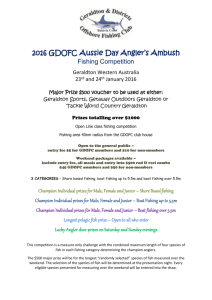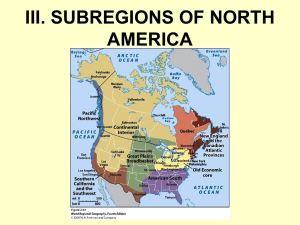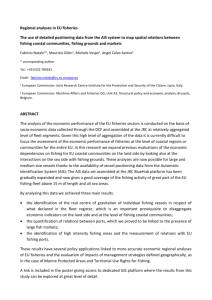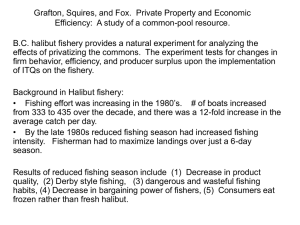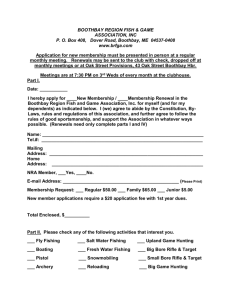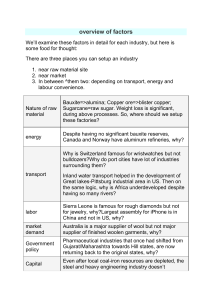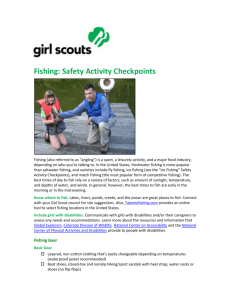Assignment 4 – Cross Curricular Lesson on Fishing
advertisement
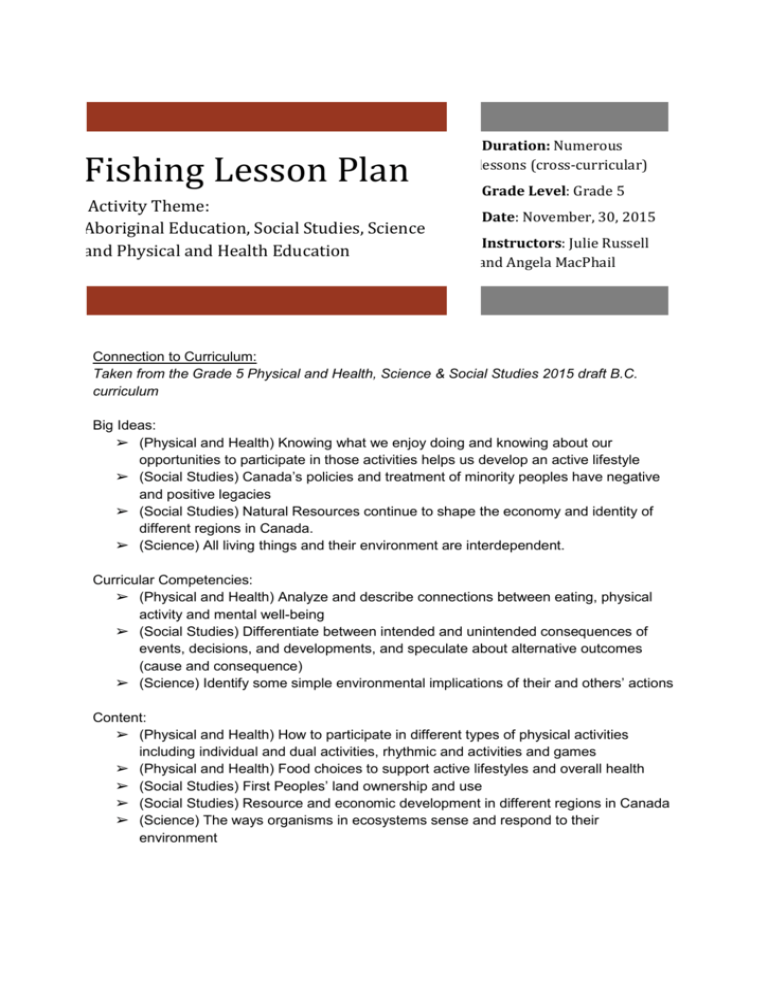
Fishing Lesson Plan Activity Theme: Aboriginal Education, Social Studies, Science and Physical and Health Education Duration: Numerous lessons (cross-curricular) Grade Level: Grade 5 Date: November, 30, 2015 Instructors: Julie Russell and Angela MacPhail Connection to Curriculum: Taken from the Grade 5 Physical and Health, Science & Social Studies 2015 draft B.C. curriculum Big Ideas: ➢ (Physical and Health) Knowing what we enjoy doing and knowing about our opportunities to participate in those activities helps us develop an active lifestyle ➢ (Social Studies) Canada’s policies and treatment of minority peoples have negative and positive legacies ➢ (Social Studies) Natural Resources continue to shape the economy and identity of different regions in Canada. ➢ (Science) All living things and their environment are interdependent. Curricular Competencies: ➢ (Physical and Health) Analyze and describe connections between eating, physical activity and mental well-being ➢ (Social Studies) Differentiate between intended and unintended consequences of events, decisions, and developments, and speculate about alternative outcomes (cause and consequence) ➢ (Science) Identify some simple environmental implications of their and others’ actions Content: ➢ (Physical and Health) How to participate in different types of physical activities including individual and dual activities, rhythmic and activities and games ➢ (Physical and Health) Food choices to support active lifestyles and overall health ➢ (Social Studies) First Peoples’ land ownership and use ➢ (Social Studies) Resource and economic development in different regions in Canada ➢ (Science) The ways organisms in ecosystems sense and respond to their environment First People’s Principles of Learning: ➢ Learning is holistic, reflexive, reflective, experiential, and relational. ➢ Learning involves patience and time. ➢ Learning recognizes the role of indigenous knowledge. Objective: A hands-on, interactive and experiential lesson to teach students an appreciation for Indigenous ways of knowing, and an understanding for sustainable food practices that are ecologically and socially sustainable. This lesson is part of a larger unit on ecology and will compliment prior lessons about food chains and food webs, habitat and ecosystems. This lesson is also part of a larger unit on Aboriginal Studies on culture and traditions. Resources and Materials: ➢ $100 ➢ Transportation ➢ fishing rods (through gofish) Safety Concerns: ➢ Inform and educate students on the dangers of hypothermia and tips on hypothermia prevention and the signs and symptoms. ➢ Go over all fishing safety rules and emphasize the importance of casting fishing lines one at a time and keeping a safe distance from other students casting their lines. ➢ Give out warnings and reminders to students make make sure they are abiding by safety rules. ➢ Take a head count before and after the fishing activity to ensure that no child is left behind. ➢ Ensure each student has a field trip consent form signed and submitted. Introduction: Students learn about traditional and modern methods of fishing and create a Venn Diagram on the whiteboard comparing and contrasting traditional and modern methods in relation to sustainable fishing practices as a class activity. Students learn about the land they will be fishing on and the First Peoples who once lived and fished there. Activity 1: Visitor Centre Students board the school bus to the Visitor Centre in Abbotsford. Students tour the Visitor Centre and learn about fish biology, identification, habitat and conservation. Students are then taught the parts of a fishing rod and are each given a rope to practice tying knots. Students learn about safety rules and proper handling techniques. Activity 2: Learning How to Fish Students board the bus to the fishing location. Students learn about how to cast and reel in a fishing line. Students learn tips and techniques for how to fish and learn about the best time and locations to catch fish. Students are put into groups and take turns casting and retrieving. Lesson Extension: Take students out on a second fishing trip in a natural environment as a followup to the first lesson. Conclusion: Students return to the Visitor Centre and are debriefed on the fishing lesson. Possible Lessons: ● Instructor facilitates a group discussion on the importance of sustainable fishing practices and the importance of habitat conservation. ● Students are asked to reflect on their experiences. They are asked to reflect on the FN learning principle that learning takes patience and time. Discuss as class and connect to students’ other experiences when learning takes time. ● Discuss as a class how their thinking might shift if the fish they caught was their only source of food for their family. If students were unable to catch any fish, or enough fish for their whole family, students are asked to reflect on what they might do differently in the future. Connect to Canada's history of reserves and pushing FN peoples off their land and away from their fishing practices as their livelihood. ● Return to the effects of overfishing and the effects on the ecosystem. ● Explore the health benefits of eating fresh fish. Reference List: Canadian Council of Learning (2009). State of Aboriginal Learning in Canada: A Holistic Approach to Measuring Success, pp. 1-30 Freshwater Fisheries Society of BC (2014). Learn to Fish. Retrieved from: http://www.gofishbc.com/how-to-fish/fishing-programs/learn-to-fish.aspx




